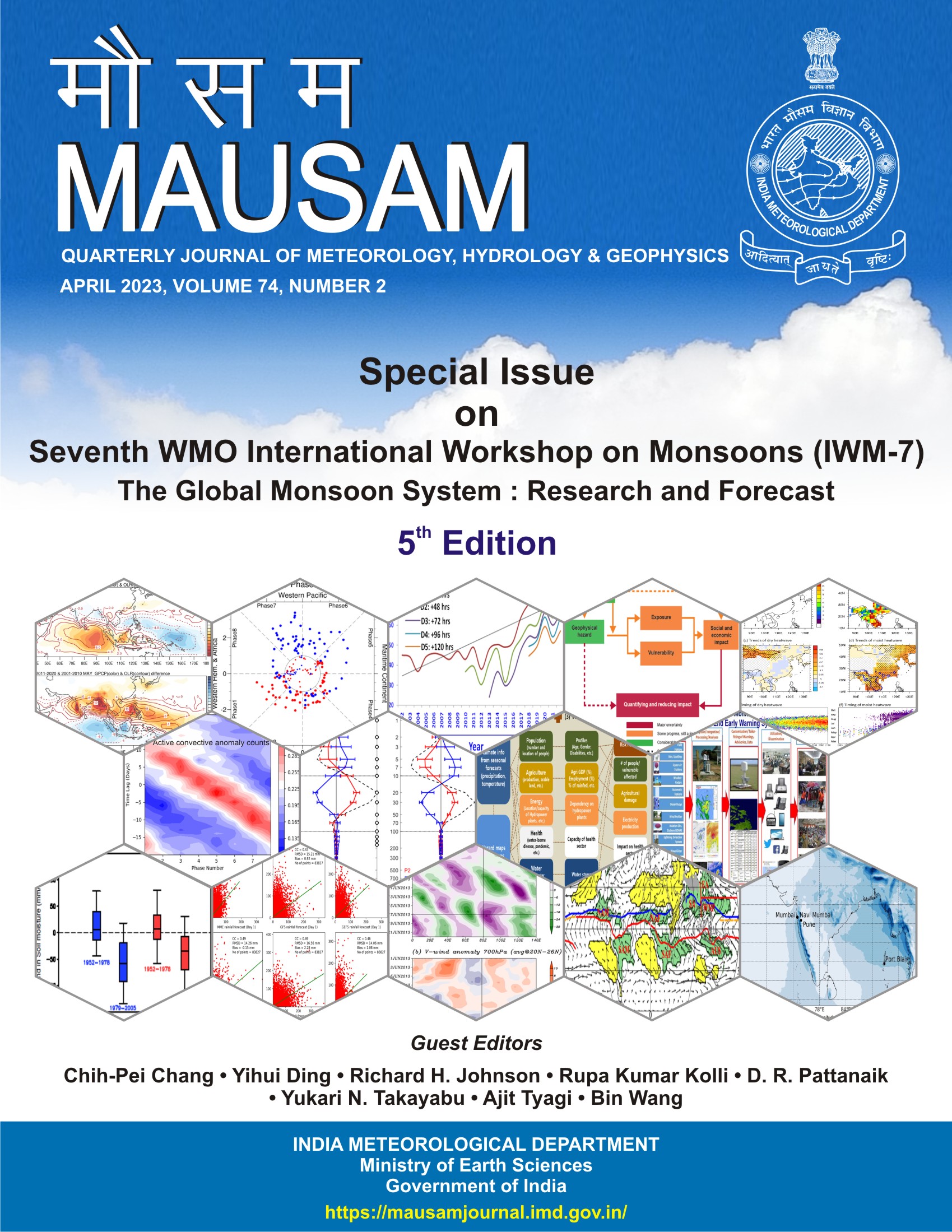Role of land surface processes on Indian summer monsoon rainfall: Understanding and impact assessment
DOI:
https://doi.org/10.54302/mausam.v74i2.6199Keywords:
Land-atmosphere interaction, HRLDAS, Soil moisture, Soil temperatureAbstract
Indian Summer Monsoon is a synoptic-scale atmospheric circulation system manifested by the boundary forcing from both continents and tropical oceans. Unlike oceans, the land surface processes are complex in nature due to the heterogeneities in land surface characteristics and its associated feedbacks, thereby constraining theaccurate representation of the land surface in NWP models. Thus, understanding the land-atmosphere interaction becomes increasingly crucial especially during the Indian summer monsoon season due to the underlying warm and moist surface layer conducive forevapotranspiration, thereby fueling land atmosphere coupling during the season. The representation of surface heterogeneity and variability are constrained due to lack of surface measurements which necessitate development of land surface analysis. The major aimof the present studyisthree-fold;firstly, understanding land surfaces processes associated with the monsoonal rainfall events, secondly, preparation of a state-of-art high-resolution land surface data over India, andfinally, impact assessment of high-resolution land surface initialization on simulation monsoonalrainfall events. This study has implications for developing improved prediction system associated with the Indian Summer Monsoon.
Indian Summer Monsoon is a synoptic-scale atmospheric circulation system manifested by the boundary forcing from both continents and tropical oceans. Unlike oceans, the land surface processes are complex in nature due to the heterogeneities in land surface characteristics and its associated feedbacks, thereby constraining theaccurate representation of the land surface in NWP models. Thus, understanding the land-atmosphere interaction becomes increasingly crucial especially during the Indian summer monsoon season due to the underlying warm and moist surface layer conducive forevapotranspiration, thereby fueling land atmosphere coupling during the season. The representation of surface heterogeneity and variability are constrained due to lack of surface measurements which necessitate development of land surface analysis. The major aimof the present studyisthree-fold;firstly, understanding land surfaces processes associated with the monsoonal rainfall events, secondly, preparation of a state-of-art high-resolution land surface data over India, andfinally, impact assessment of high-resolution land surface initialization on simulation monsoonalrainfall events. This study has implications for developing improved prediction system associated with the Indian Summer Monsoon.
Published
How to Cite
Issue
Section
License
Copyright (c) 2023 MAUSAM

This work is licensed under a Creative Commons Attribution-NonCommercial 4.0 International License.
All articles published by MAUSAM are licensed under the Creative Commons Attribution 4.0 International License. This permits anyone.
Anyone is free:
- To Share - to copy, distribute and transmit the work
- To Remix - to adapt the work.
Under the following conditions:
- Share - copy and redistribute the material in any medium or format
- Adapt - remix, transform, and build upon the material for any purpose, even
commercially.



